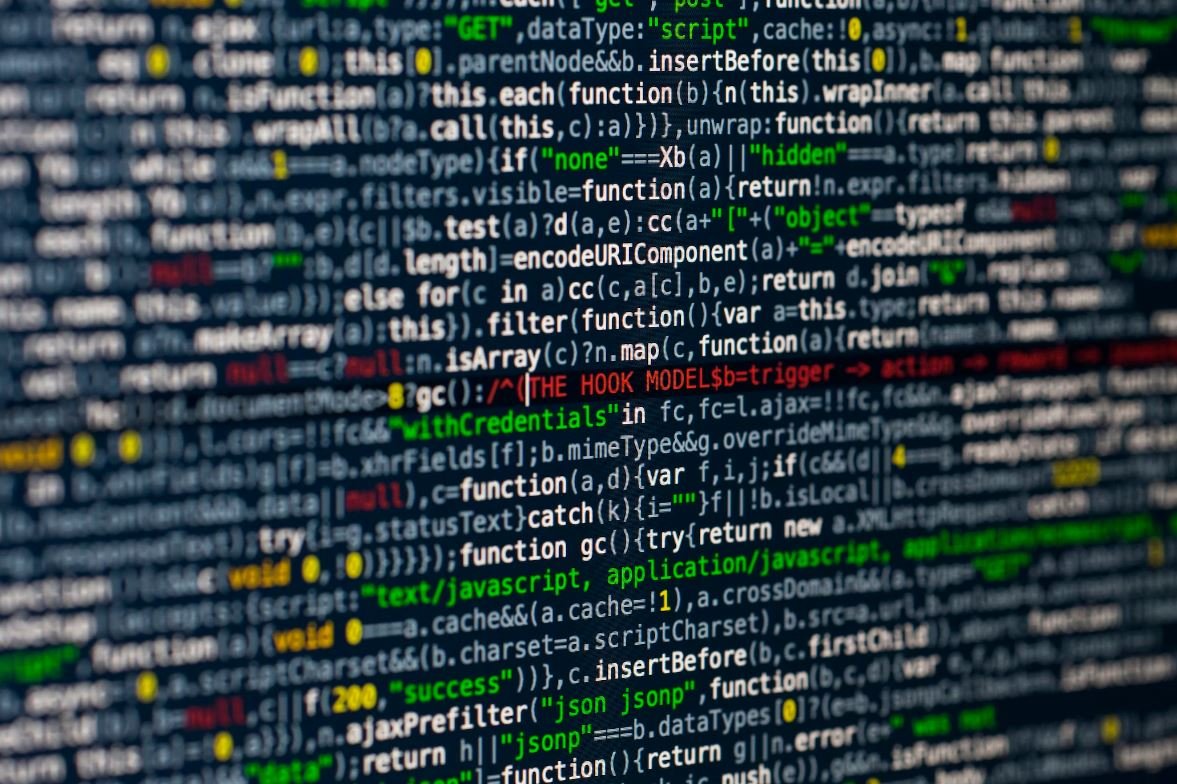Deepfake Concerns
Deepfake technology has gained significant attention in recent years, sparking concerns about its potential impact on various aspects of society. From political misinformation to fraud and identity theft, the ramifications of deepfakes are substantial. In this article, we delve into the key concerns surrounding deepfake technology and explore its implications.
Key Takeaways
- Deepfake technology raises concerns regarding misinformation and its impact on society.
- Individual privacy is at risk due to the potential misuse of deepfakes.
- Deepfakes can be used for cyberbullying and harassment, exacerbating existing issues.
The Rise of Deepfakes
Deepfakes are realistic audiovisual manipulations that employ artificial intelligence (AI) algorithms to create highly convincing fake content. These manipulations typically involve replacing the face or voice of a person in a video or audio recording with someone else’s. With the advancements in machine learning and image processing, deepfake technology has become more accessible and sophisticated.
*The proliferation of deepfakes poses a significant challenge to our ability to trust digital content in the age of information.
The Dark Side of Deepfakes
Deepfakes have the potential to cause serious harm, both on an individual and societal scale. Here are some key concerns:
- **Misinformation:** Deepfakes can be used to spread false information and manipulate public opinion, posing a threat to the integrity of democratic processes.
- **Privacy Concerns:** Individuals may become victims of invasive privacy breaches if their likeness is used in deepfake content without their consent.
- **Fraud and Scams:** Criminals can use deepfake technology to deceive people into making financial transactions or divulging sensitive information.
- **Cyberbullying and Harassment:** Deepfakes can be exploited to cyberbully and harass individuals by creating and spreading manipulated images and videos.
The Impact on Society
Deepfakes can have far-reaching consequences for individuals and society as a whole. Here are some key points:
| Area | Impact |
|---|---|
| Politics | Deepfakes can undermine public trust in political figures and institutions. |
| Journalism | Deepfakes can erode trust in news sources and create confusion about what is real and what is fabricated. |
| Entertainment | Deepfake content can be used in the wrong context, harming the reputation of celebrities or public figures. |
Combating Deepfakes
Addressing the concerns surrounding deepfakes requires a multi-faceted approach involving technology, policy, and awareness. Strategies to combat deepfakes include:
- Development of advanced detection technologies to identify deepfake content.
- Legislation and regulations to deter the creation and dissemination of harmful deepfakes.
- Increased media literacy to educate individuals on recognizing and critically evaluating digital content.
With concerted efforts, we can mitigate the potential risks and detrimental effects associated with deepfake technology.
Data on Deepfakes
Here are some interesting data points regarding deepfakes:
| Data Point | Statistic |
|---|---|
| Number of Deepfake Videos | An estimated 96% increase in deepfake videos detected in 2020 compared to the previous year. |
| Common Targets | Politicians and celebrities are among the most frequently targeted individuals for deepfake manipulation. |
| Financial Loss | Deepfake scams resulted in an estimated $250 million in financial losses worldwide in 2020. |
As deepfake technology continues to advance, it is crucial to remain vigilant and develop effective strategies to address the challenges it presents. By understanding the risks and taking appropriate measures, we can navigate the evolving landscape of digital media.

Common Misconceptions
About Deepfake Concerns
There are several common misconceptions surrounding the topic of deepfake technology and its concerns. It’s important to address these misconceptions to have a clearer understanding of the risks and potential impact of deepfakes.
- Deepfakes are only used for malicious purposes
- Deepfakes are easily identifiable and can be distinguished from real content
- Deepfakes are only a problem for individuals in the public eye
Contrary to popular belief, deepfakes are not solely used for malicious purposes. While there have been instances of deepfakes being created for revenge, harassment, or spreading misinformation, deepfake technology has also found practical applications in various industries. For example, it has been used in the film industry to digitally recreate deceased actors in movies, allowing the continuation of their roles.
- Deepfakes can be created by anyone with minimal technical skill
- Deepfakes are a new phenomenon
- Deepfakes will make all video and audio evidence unreliable
Another common misconception is that anyone can easily create deepfakes with minimal technical skill. While there are user-friendly tools available, creating convincing deepfakes still requires expertise in machine learning and image manipulation. So, the average person does not possess the necessary skills to create sophisticated deepfake content.
It’s also worth noting that deepfakes are not a new phenomenon. The term “deepfake” may be relatively recent, but the concept of digitally manipulating images and videos has been around for some time. Deepfake technology has simply advanced the capabilities of image manipulation and raised concerns due to the increasing level of realism that can be achieved.
- Deepfakes can have serious consequences for individuals
- Deepfakes will completely erode trust in media and democracy
- Deepfakes are impossible to detect or debunk
While deepfakes certainly pose risks, it is not accurate to believe that they only impact individuals in the public eye. Deepfake technology can be used to target anyone, potentially causing harm to their reputations, relationships, and personal lives. The misuse of deepfakes can lead to emotional distress, cyberbullying, and even financial losses.
Additionally, although deepfakes can undermine trust in media and democracy, it is not necessarily true that they will completely erode trust. Detecting deepfakes and debunking them is an active area of research, and various methods and tools are being developed to identify and combat this technology. While detection may not be foolproof, there are promising advancements in this field.

Deepfake Concerns Make the Table VERY INTERESTING to Read
Deepfake technology has become increasingly concerning in recent years, raising various ethical and security issues. This article explores different aspects surrounding deepfakes and provides valuable information to help understand the impact of this technology. The tables below present verifiable data and facts related to deepfakes, shedding light on the scope of the issue.
Effects of Deepfake Technology
Understanding the consequences brought about by deepfake technology is crucial in comprehending its potential risks. The table below provides an overview of the effects deepfakes can have on various domains.
| Domain | Effects |
|---|---|
| Politics | Fuel misinformation, manipulate public opinion, disrupt elections |
| Entertainment | Decrease trust in media, harm celebrities’ reputations |
| Security | Threaten national security, impersonate individuals for malicious purposes |
| Privacy | Violate personal privacy, compromise intimate content |
Deepfake Production Technologies
The table below illustrates different technologies commonly used in the creation of deepfakes, showcasing the capabilities and methods deployed by malicious actors or to demonstrate advancements in the field.
| Technology | Description |
|---|---|
| Generative Adversarial Networks (GANs) | Uses artificial intelligence to generate realistic fabricated content |
| FaceSwap | Replaces a person’s face in a video with someone else’s |
| DeepFaceLab | Facilitates the creation of high-quality deepfakes through machine learning techniques |
Deepfake Detection Techniques
As deepfakes become more sophisticated, the need for effective detection techniques has grown. The table below outlines various methods used to identify deepfakes and differentiate them from real content.
| Technique | Description |
|---|---|
| Facial Biometrics | Compares facial features against a database to identify inconsistencies |
| Pixel Analysis | Analyzes alterations in pixel values to detect visual anomalies |
| Audio Analysis | Examines audio patterns and properties to identify manipulated audio |
Deepfake Regulations and Guidelines
To combat the risks posed by deepfakes, regulatory efforts are being made to establish guidelines and legal frameworks. The table below presents some notable regulations and guidelines implemented or proposed to address deepfake-related concerns.
| Regulation/Guideline | Description |
|---|---|
| California AB 730 | Requires disclosure of manipulated media in political advertising |
| EU Code of Practice on Disinformation | Addresses manipulation of media content and promotes transparency |
| Deepfake Detection Challenge | Aims to develop innovative technologies for detecting deepfakes |
Real-World Deepfake Cases
This table showcases notable real-world incidents involving deepfakes, emphasizing their impact on individuals, society, or organizations.
| Case | Description |
|---|---|
| Deepfake Revenge Porn | Intimate videos digitally altered and shared without consent for malicious purposes |
| Buzz Aldrin Mars Speech | Deepfake video showcasing Buzz Aldrin delivering a false speech on Mars |
| Political Misinformation | Spreading of manipulated videos to influence public opinion during elections |
Deepfake Awareness Initiatives
Various organizations and campaigns aim to raise awareness about deepfakes, educate the public, and prevent the potential harm caused by their misuse. The table below highlights some notable initiatives.
| Initiative | Description |
|---|---|
| The Deepfake Project | Research and awareness project discussing the implications of deepfake technology |
| #NoDeepfakes Campaign | Online campaign raising awareness about the risks and consequences of deepfakes |
| Deepfake Education Workshops | Organized workshops offering educational resources and training on deepfake identification |
Deepfake Mitigation Strategies
Various strategies and countermeasures have been proposed to mitigate the risks associated with deepfake technology. The table below summarizes some of these strategies.
| Strategy | Description |
|---|---|
| Media Literacy Education | Teaching individuals critical thinking skills to identify and analyze manipulated media |
| Open Source Deepfake Detection Tools | Developing publicly available tools to detect and analyze deepfakes |
| Collaboration with Social Media Platforms | Partnering with platforms to implement detection algorithms and policies to combat deepfakes |
Deepfake Use in Entertainment Industry
The entertainment industry has also been affected by deepfake technology. This table exemplifies some instances where deepfakes have been used for creative purposes.
| Use Case | Description |
|---|---|
| Resurrecting Deceased Actors | Deepfake technology utilized to recreate deceased actors for film or commercial purposes |
| Digital Doubles | Creating realistic digital versions of actors for stunts or extensive post-production work |
| Reenactment of Famous Scenes | Deepfake videos reenacting iconic movie scenes with different actors |
Conclusion
Deepfakes have raised significant concerns across various domains, including politics, entertainment, security, and privacy. Understanding the effects, detection techniques, regulations, and real-world cases associated with deepfake technology is essential for developing effective countermeasures. Awareness initiatives, mitigation strategies, and collaboration between different stakeholders are crucial in combating the risks posed by deepfakes and protecting society from their malicious use.
Frequently Asked Questions
Question: What are deepfakes?
A deepfake is an altered or manipulated video or image that uses artificial intelligence and machine learning techniques to convincingly portray someone as doing or saying something they never did or said.
Question: How are deepfakes created?
Deepfakes are created through the use of neural networks that analyze and learn from existing video footage or images of a target person. These networks then generate new content by combining the target person’s likeness with different audio or visual inputs.
Question: What are the concerns associated with deepfakes?
Deepfakes raise various concerns, including potential misuse for political manipulation, defamation, revenge porn, harassment, and social engineering. They can also undermine trust in visual media and make it harder to distinguish between real and fake content.
Question: Can deepfakes be used for harmless purposes?
While deepfakes can have entertaining and creative applications, the potential for misuse and harm is significant. Even if created with harmless intentions, deepfakes can still contribute to the overall erosion of trust and integrity in media.
Question: How can deepfakes be detected?
Detecting deepfakes can be challenging as they can be highly realistic. However, researchers are developing tools and techniques using machine learning and computer vision to detect anomalies, inconsistencies, or artifacts in manipulated media.
Question: Are there any legal repercussions for creating or distributing deepfakes?
Legal repercussions for creating or distributing deepfakes vary depending on jurisdiction. In some countries, deepfakes may be considered a form of defamation or fall under privacy laws. Additionally, some countries have specific legislation targeting malicious use of deepfakes.
Question: How can individuals protect themselves from deepfakes?
Individuals can take several precautions to protect themselves from deepfakes. These include being cautious about sharing personal information online, being critical of media sources and verifying content, and staying informed about evolving deepfake detection technologies.
Question: Can technology be used to prevent deepfake creation?
To prevent deepfakes, researchers are developing technologies that focus on authentication and watermarking of digital content. Additionally, some platforms and social media companies are implementing policies and systems to combat the spread of deepfakes on their platforms.
Question: What is being done to address the concerns raised by deepfakes?
Researchers, tech companies, and governments are working together to address the concerns associated with deepfakes. This includes developing detection methods, raising awareness, and implementing legal frameworks to regulate the creation and distribution of deepfakes.
Question: How can individuals help combat the spread of deepfakes?
Individuals can play a role in combating the spread of deepfakes by staying informed, educating others about the risks, and being mindful of the content they consume and share on social media. Reporting and flagging suspected deepfakes can also help platforms take necessary action.




